The pandemic has fueled internal hiring in Asia-Pacific: LinkedIn report

Prior to COVID-19, recruiting was already going through a period of change. The rise of analytical and digital tools, the increasing focus on diversity, and the shift in skills needed meant the role of the recruiter was evolving.
But now recruiters and HR face a unique challenge of filling roles in an environment where talent is increasingly inclined to stay where they are and many organizations are contemplating or have initiated hiring freezes.
While internal mobility has always been important, in today’s climate, recruiters are focusing more and more on existing talent and Asia-Pacific is embracing this trend. The average rate of internal mobility* in Asia-Pacific increased by about 15 percent in 2020, compared to a year earlier.
*Internal mobility rate is calculated as the transitions made within the same organization, to dissimilar roles, as a percentage of all transitions.
We analyzed LinkedIn’s data to gain insights on how the region is pacing, and took a deep dive into the type of roles, functions and industries with the highest internal mobility rates across key markets. These insights can help any talent professionals get the right mix between looking internally and externally to fill gaps in their workforce.
Asia-Pacific outpaces global trends in internal mobility rates
Globally the internal mobility rate between April to August 2020 was 19.5 percent, but many Asia-Pacific countries are sitting above that. Indonesia is the regional leader, with a 24 percent rate of internal mobility, followed by New Zealand at 22 percent, and Singapore at 21 percent. It's also worth noting that the region's two largest markets, China and India are both below the global average.
 Y- axis represents the IM rate - the internal transitions made to dissimilar roles as a percentage of all transitions
Y- axis represents the IM rate - the internal transitions made to dissimilar roles as a percentage of all transitions
Compared to their five-year average, most Asia-Pacific nations recorded an increase in internal mobility rates in 2020, with India seeing the highest growth of four percent. China was the only country that recorded a decrease, with internal mobility rates falling by two percent from their five-year average.
There are a number of factors, which drive the divergence in trends between countries - from generalist roles, which lend themselves to easy transitions, to the dominance of certain industries or functions.
Many factors dictate how internal hires get made
We looked at internal mobility rates within three categories of environmental factors: industry, function and location. The top categories in each attribute observe between 1.2X and 1.3X higher internal mobility rates above average.
 Factors dictating how internal hires get made
Factors dictating how internal hires get made
In Asia-Pacific, data shows that energy and mining, manufacturing, and consumer goods are the industries with above-average internal mobility.
Typically the types of roles we see moving internally are generalist roles, with many transferable skills that can be adapted to different sections and demands of the business. In Asia-Pacific, this frequently includes functions like product management, finance, and consulting.
Deep dive - What factors are driving internal mobility in key markets?
While Asia-Pacific has some broad, uniting trends, there still are differences between each country.
Talent with generalist skills like product management or finance appears frequently on many country’s lists.
Functions with the highest internal mobility rates across key markets
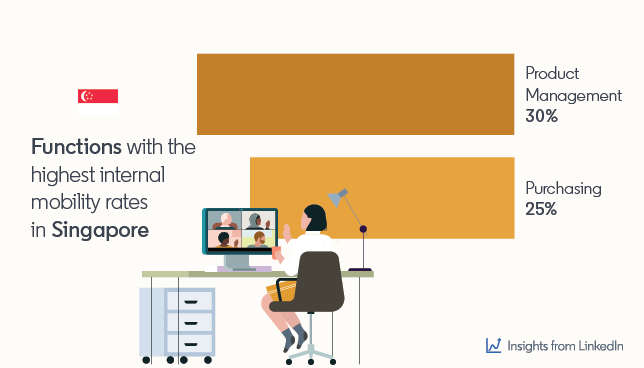
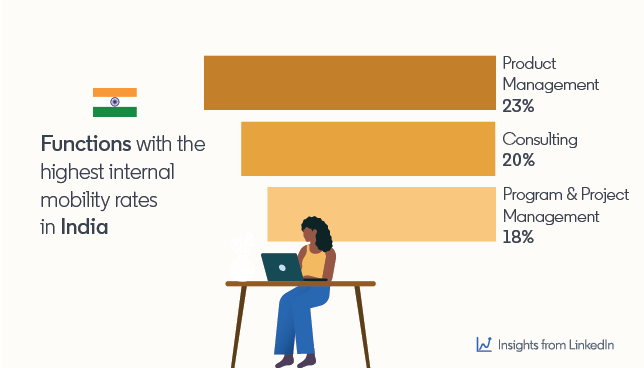
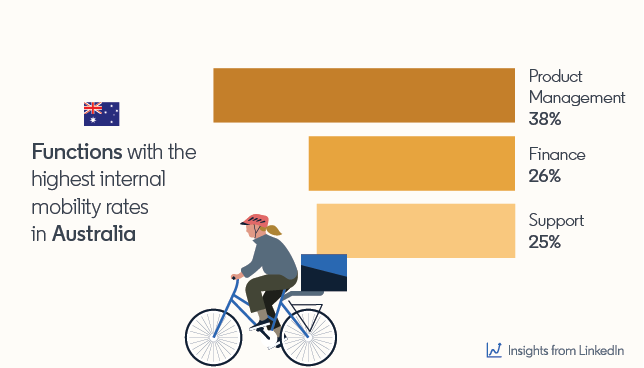
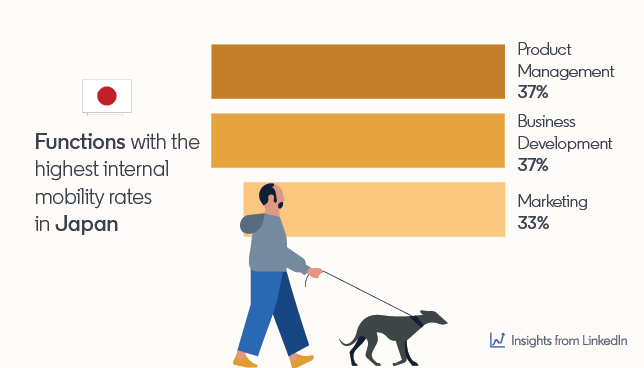
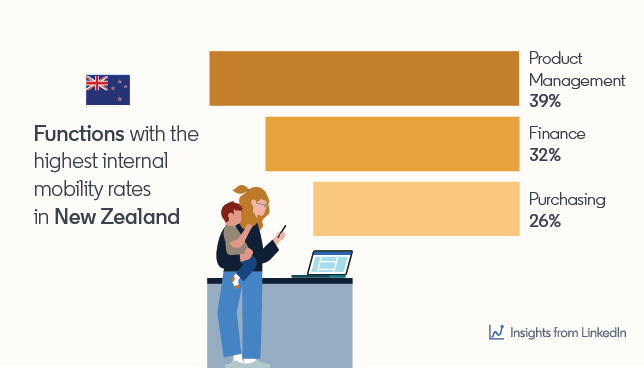
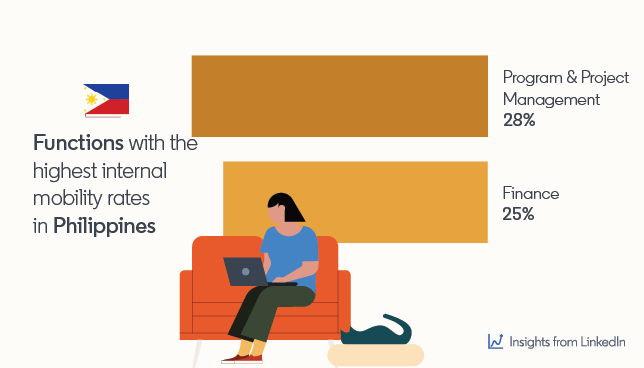
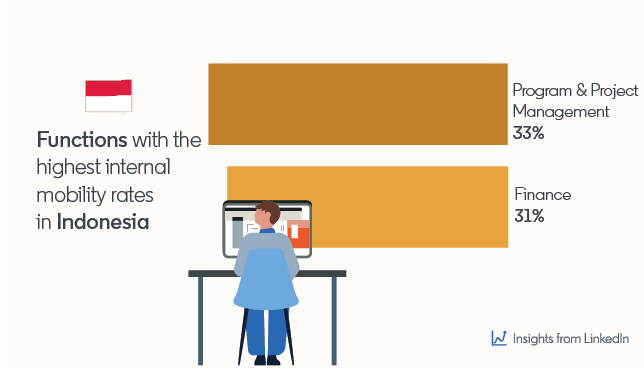
The industries and functions with a high mobility rate reflect each country's own market. Australia's tech workforce is expected to contract. ACS Digital Pulse report predicted that COVID-19 would see 35,000 fewer technology workers between March and December 2020. This is despite Australia’s hardware and networking sector growing, amid tech demands. A shortage of talent on the ground may be what is seeing the industry foster a higher degree of internal mobility. Meanwhile, Australia’s largest employer, the NSW Government, is also likely to be fuelling the high mobility rate in public administration- as talent moves between roles within the government.
Industries with the highest internal mobility rates across key markets
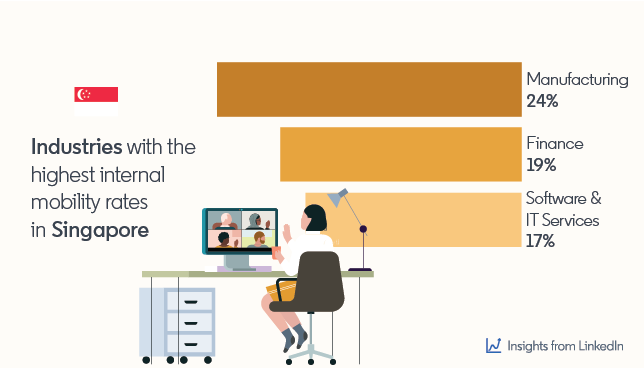
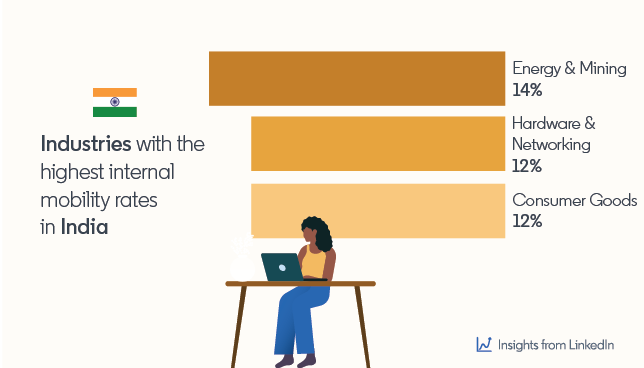
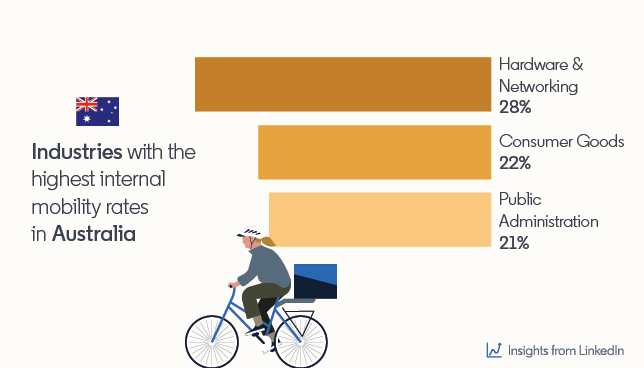
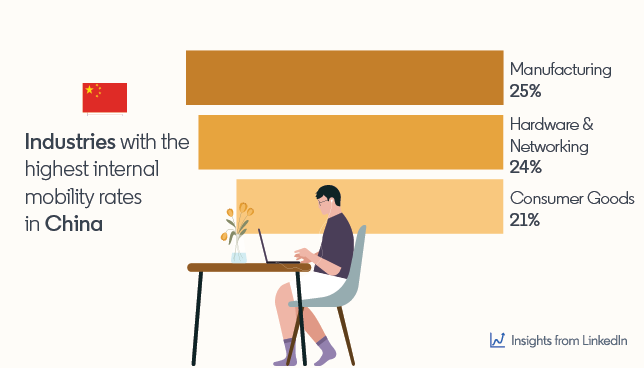
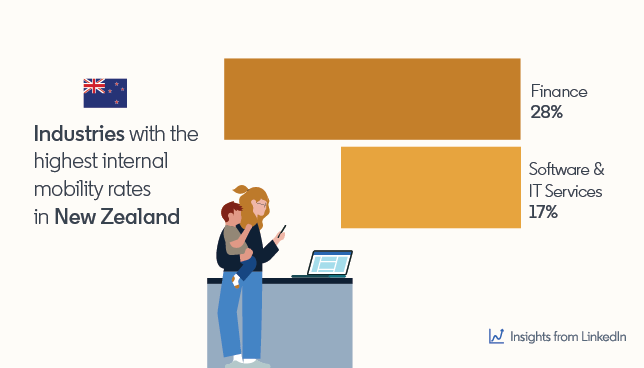
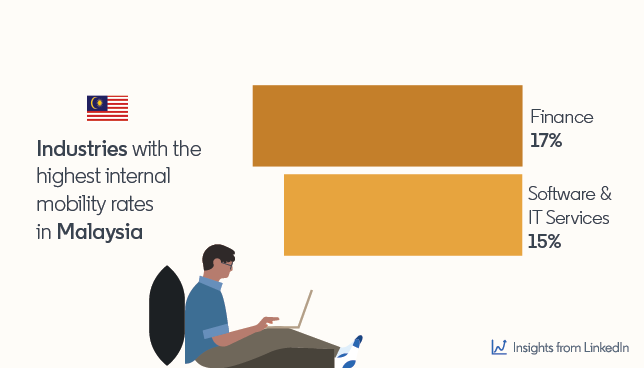
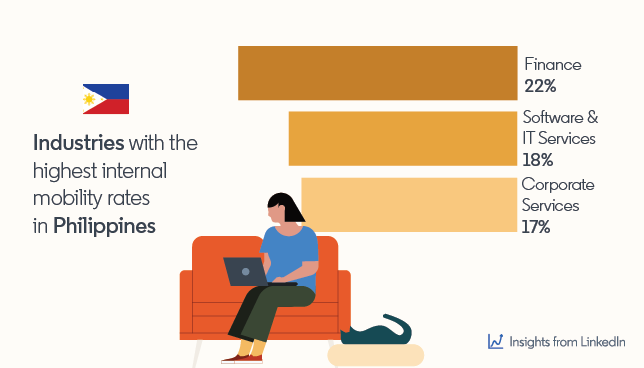
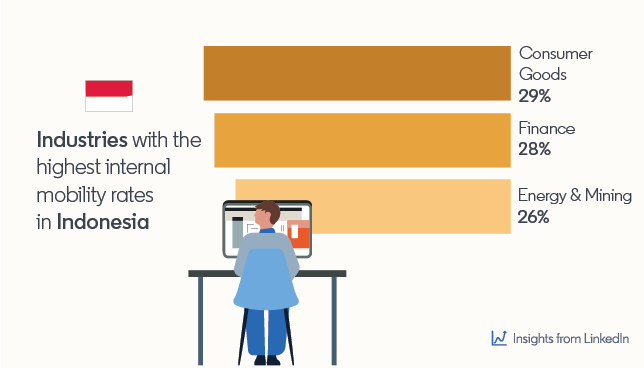
Unsurprisingly, the roles with the highest rate of internal mobility reflect the generalist skills, but also the types of industries particular countries are market leaders in. For example, India has a high level of tech-based roles which transition - reflecting its dominance in IT.
Roles with the highest internal mobility rates across key markets
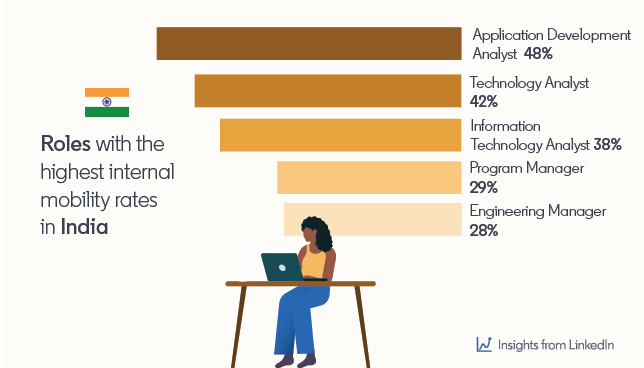
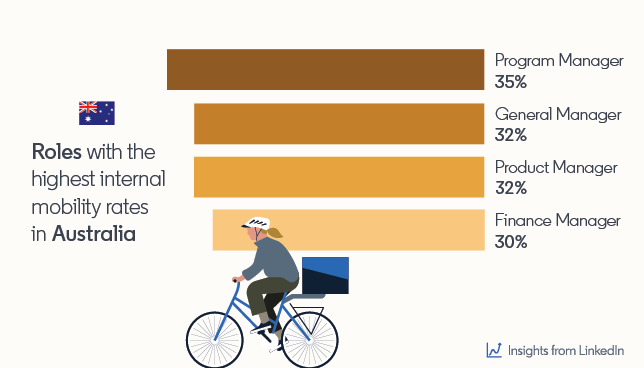
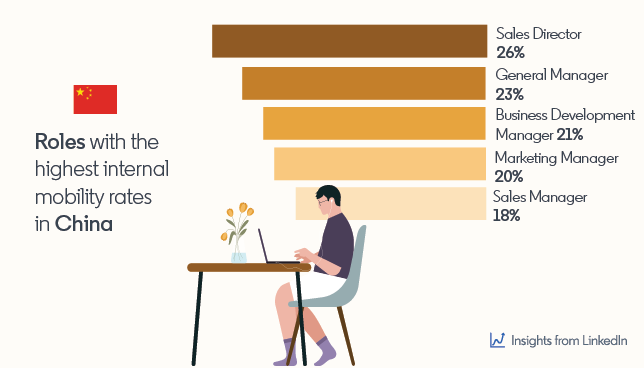
Balancing internal and external recruitment
Based on our findings, roles with functions like product management, marketing, finance and consulting more readily transition, meaning recruiters can focus internally when sourcing this talent. Meanwhile, functions like engineering and healthcare services are in high demand, but less inclined to make an internal shift. A targeted upskilling and reskilling program might help foster this in-demand talent internally.
Balancing the mix of internal and external recruiting plans is key to building a strong talent pipeline. Plotting out which roles are more likely to make an internal transition, versus those that are in demand can make knowing where to look for talent much easier.
Takeaways for talent professionals
While COVID-19 has seen organizations quickly transition to remote working and adopt more technology, the health crisis has also been a catalyst for more internal mobility. Most HR teams already have a good sense of their existing internal talent pool, but identifying new opportunities for employees can deliver benefits beyond filling roles.
LinkedIn’s Global Talent Trends report found that employees stay 41percent longer at companies with high internal hiring. Internal mobility can boost retention and increase engagement because talent can see their own pathway to success within their organization.
Recruiters and HR can use learning and development programs for employees to bring them up to speed for skills they need now, and also for skills the organization may need down the track. Platforms like LinkedIn Learning help connect employees to relevant applicable skills and drive engagement through a personalised learning experience.
- Educate employees on what upskilling opportunities are available, how to harness them, and how they can help
- Make new learning pathways easy and available to all employees regardless of where or how they work
- Empower your employees by encouraging them to be proactive in looking for courses that can grow their skillset
- Encourage employees to share their learning and knowledge gained
- Normalize upskilling and allocate time to professional growth
- Upskill to optimize for critical and emerging capabilities to stay ahead of the competition
- Enable leadership teams to lead by example in adopting and utilizing online learning platforms
Mapping existing talent, and building a formalised internal recruiting program can help teams identify new opportunities for existing employees.
- Reach out proactively for internal hires to show employees that they are valued and thought about for opportunities
- Internal recruiting should be structured to allow employees to be proactive too
- Connect Talent Acquisition with teams across HR and develop talent for future skills rather than recruiting talent with fixed skills
- Don’t seek perfection. Be prepared to train and support your talent as they move into new roles
- Prove the payoff. Show managers it’s a win for your company to have the top talent progres
- Give employees a great candidate experience. Every application deserves a polite response and some constructive feedback - even if they’re not hired

















